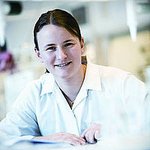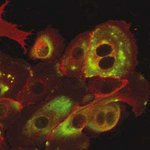In connection with your PhD defence, you have to send us a brief description of your project by e-mail no later than 14 days after submitting your dissertation, whereupon we will announce your defence here on the GSNS website. We will also forward the description of your project to selected media, including newspapers.
We encourage you to think carefully about the description – see hints below. Experience shows that good, informative descriptions increase the likelihood of having the defence published in the media, and the media may even contact you with a view to writing a more in-depth story.
No later than 14 days after submitting your dissertation, you have to:

The following is an (fictitious) example of how a summary can be structured:
Analysis of proteins in connective tissue – gaining an understanding of rheumatoid diseases
PhD defence, Sunday 24 December 2024. [your name].
During his/her studies, [your name] researched the proteins in human connective tissue. Connective tissue is special in that its cells form a strong network of highly water-binding carbohydrates and proteins located outside the cells. [Name] studied how one of the proteins, the so-called inter-a-inhibitor, stabilises the carbohydrates and how the protein is broken down in connection with inflammatory conditions such as rheumatoid arthritis.
The new research findings contribute to the understanding of how the connective tissue is formed and the mechanisms the body uses to counteract the breakdown of the connective tissue seen in rheumatic diseases.
The PhD degree was completed at the Interdisciplinary Nanoscience Center (iNANO), Faculty of Natural Sceinces, Aarhus University.
This summary was prepared by the PhD student.
Time: Sunday 24 December 2024 at 24.00
Place: Building 1532, room 116, Lecture Theatre G1, Department of Mathematics, Ny Munkegade 120, Aarhus University, 800 Aarhus C.
Title of dissertation: Inter-alpha-inhibitor a proteoglycan in the extracellular matrix
Contact information: [your name], e-mail: [your e-mail address], tel.: +45 [your telephone number – your mobile number, if applicable]
Members of the assessment committee:
[Professor xxxx xxxx, Department of xxxxx, University of Geneva, Switzerland
Professor xxxxx xxxxx, Institute of xxxxxx, University of Oslo, Norway
Professor xxxxx xxxxx (chair), Department of xxxxxx, Aarhus University]
Main supervisor:
[Professor xxxx, iNANO, Aarhus University]
Co-supervisor:
[Professor xxxx, iNANO, Aarhus University]
Language: The PhD dissertation will be defended in English
The defence is public.
The PhD thesis is available for reading at the Graduate School of Natural Sciences/GSNS, Ny Munkegade 120, building 1521, 8000 Aarhus C.
Additional illustration and corresponding text (optional):

Photo: Peter Gabriel
Image of the development of rheumatoid arthritis
The dark round holes are where the inflammation is in the process of breaking down the connective tissue cells, thereby developing rheumatoid arthritis.
In his/her PhD project, [your name] developed a new technique that makes it possible to monitor and photograph the breakdown of connective tissue protein. This provided the researchers with a new tool to gain insight into the development of rheumatoid diseases.